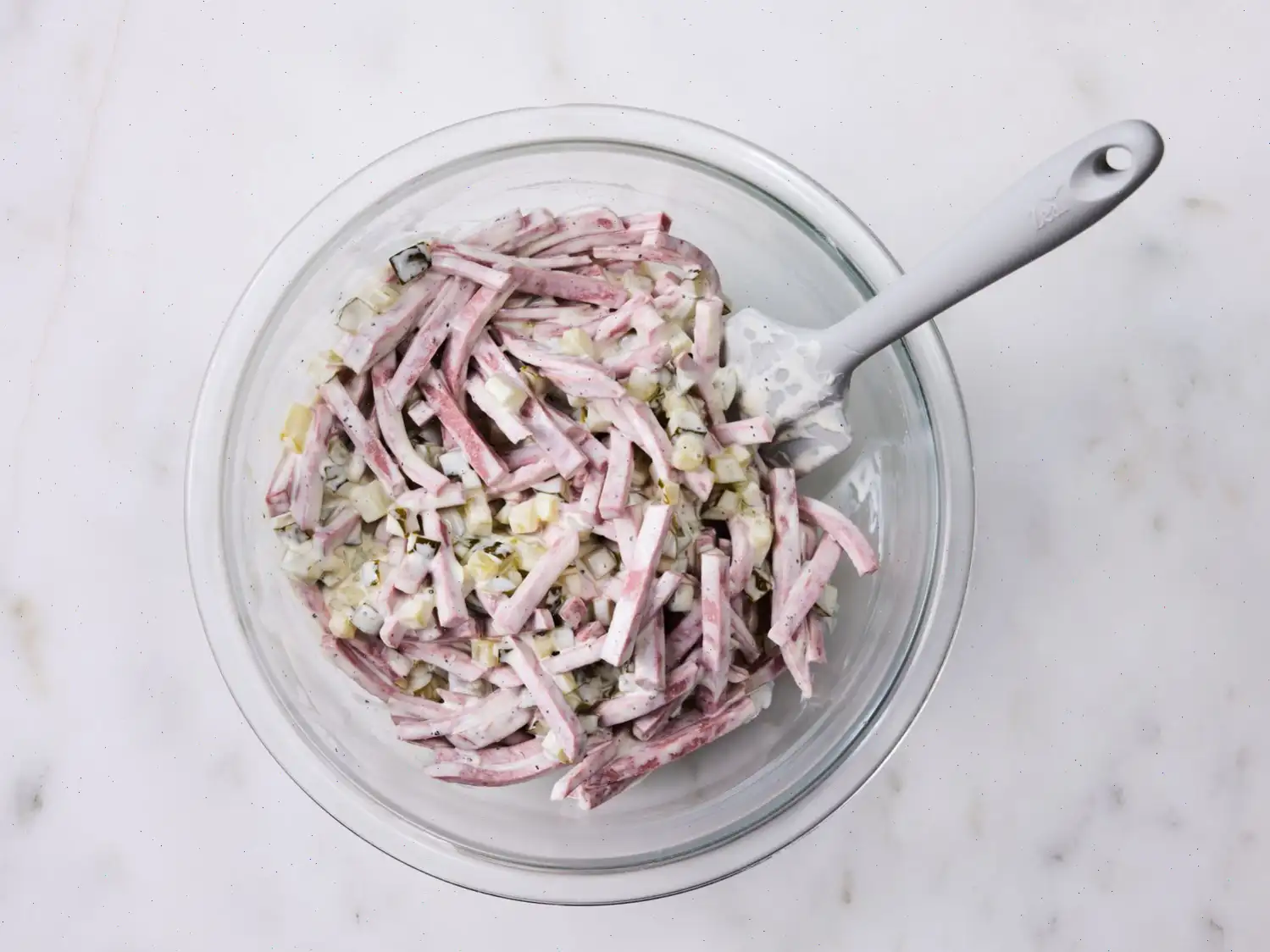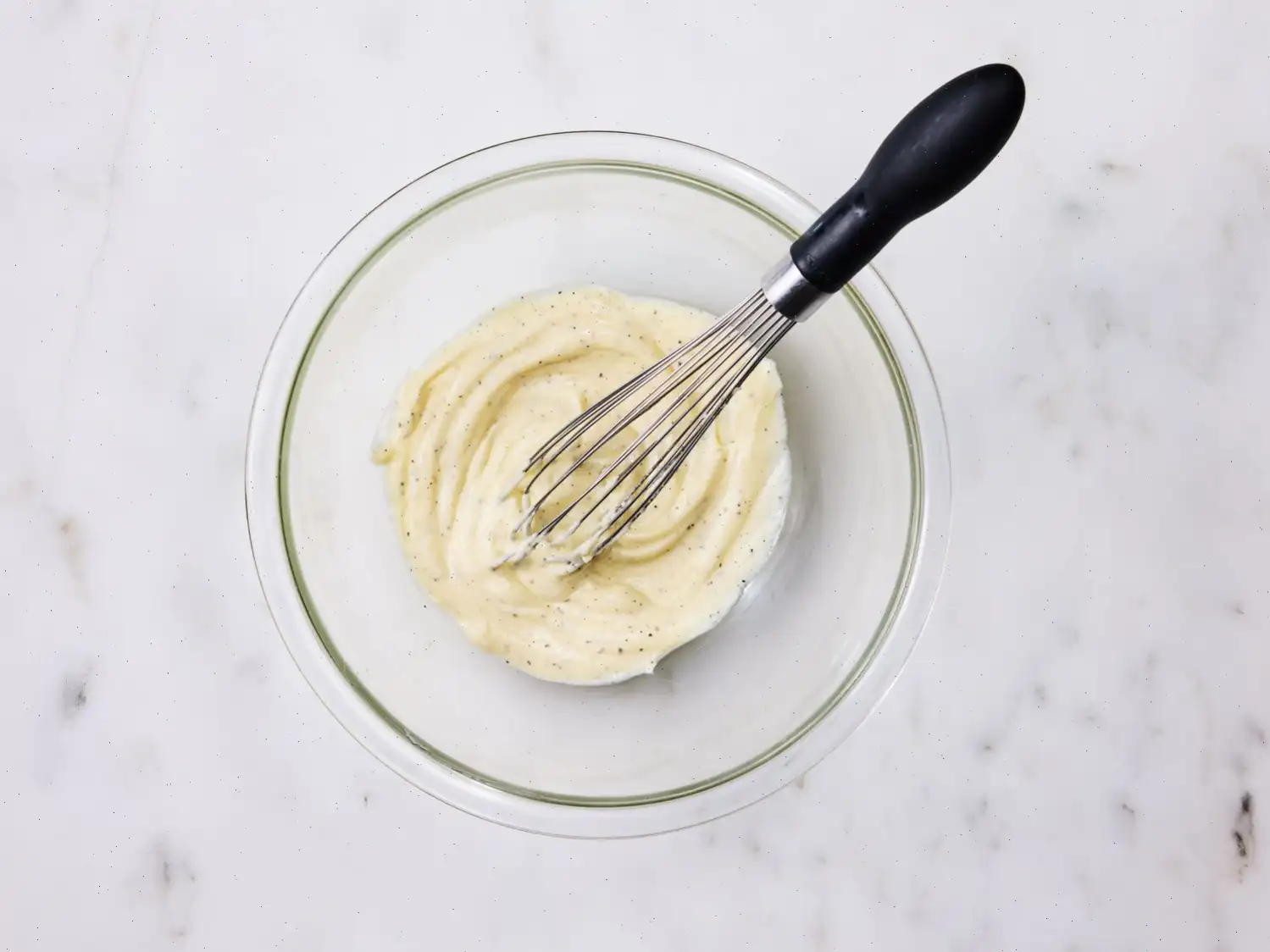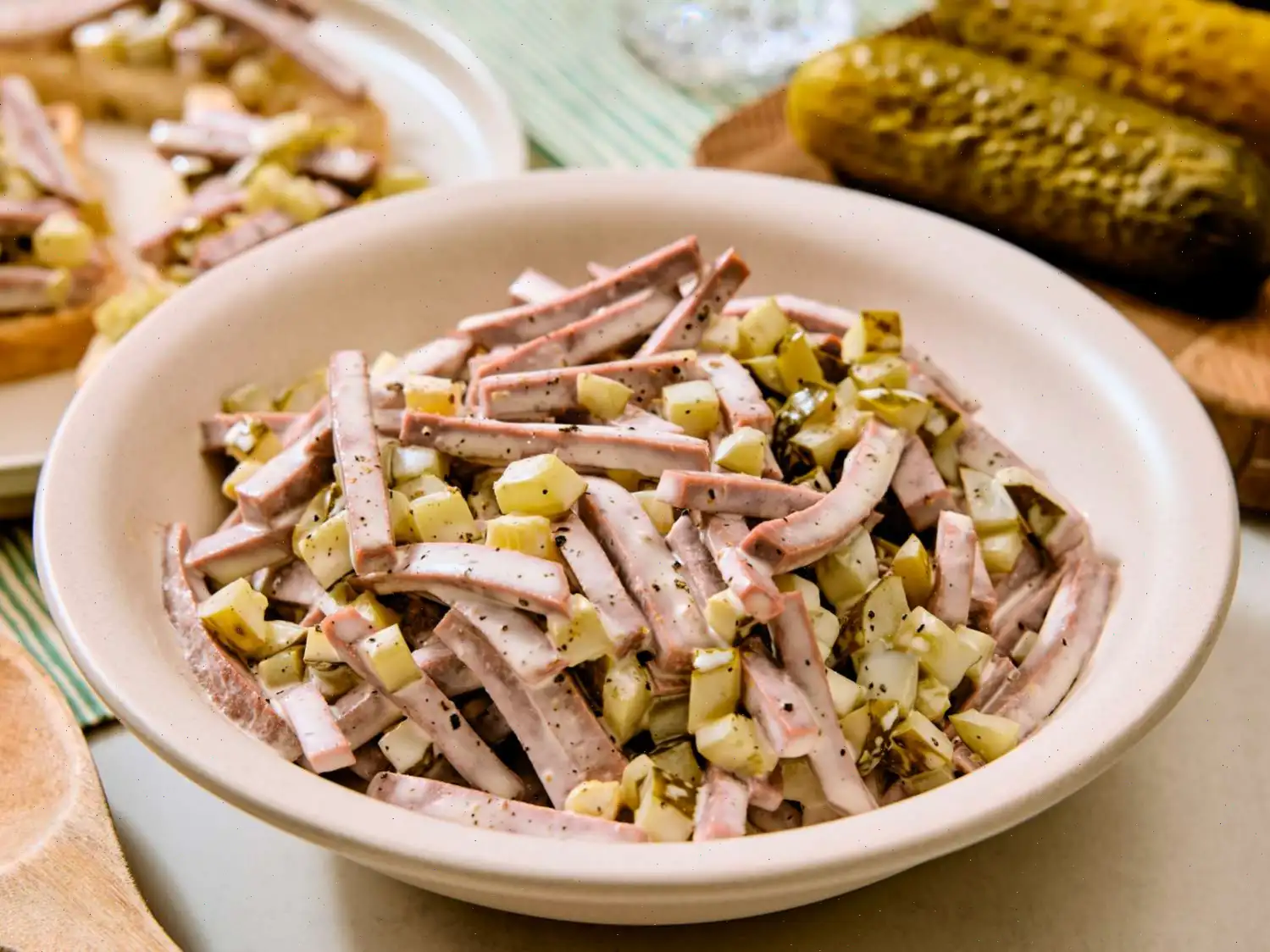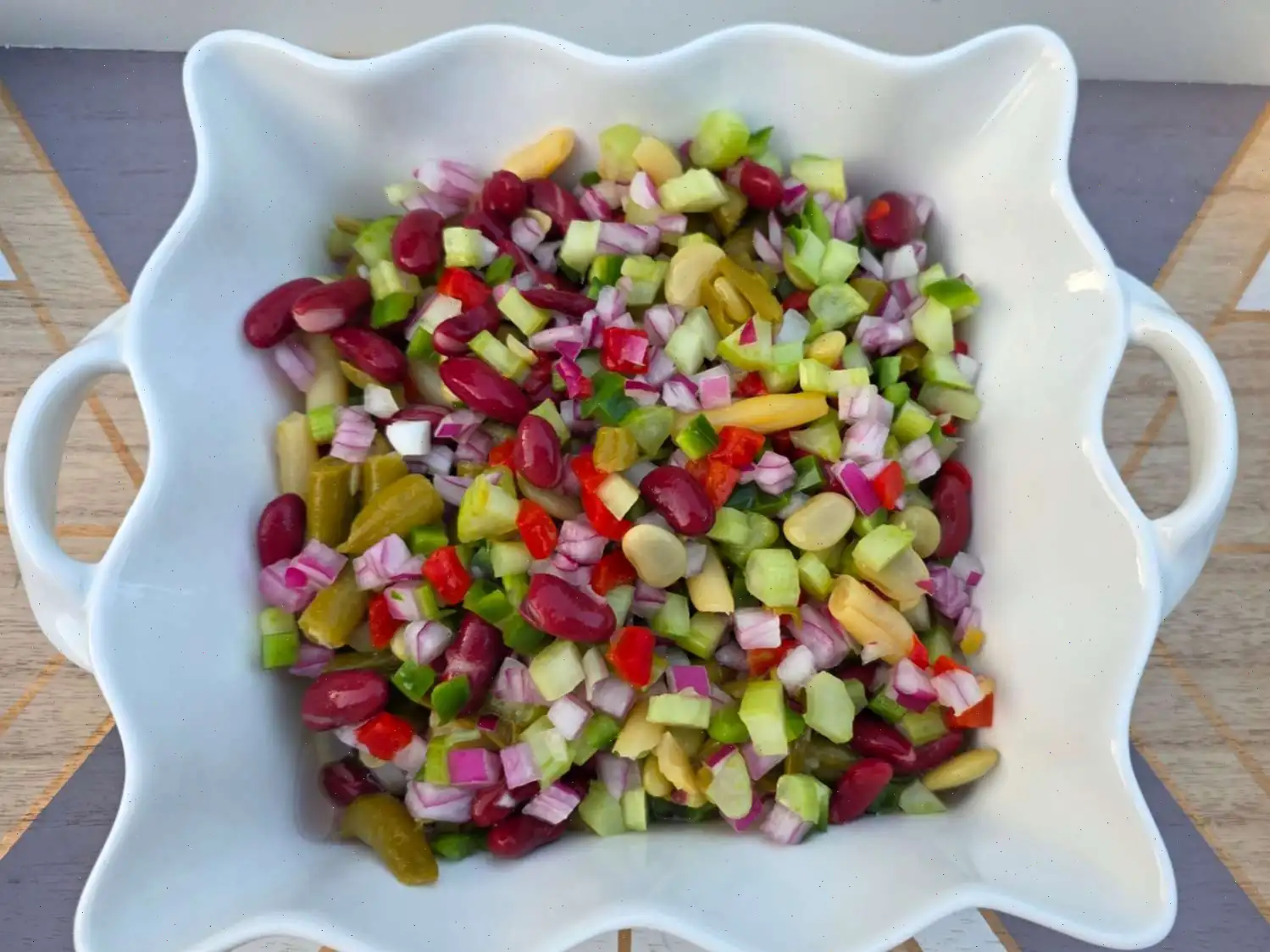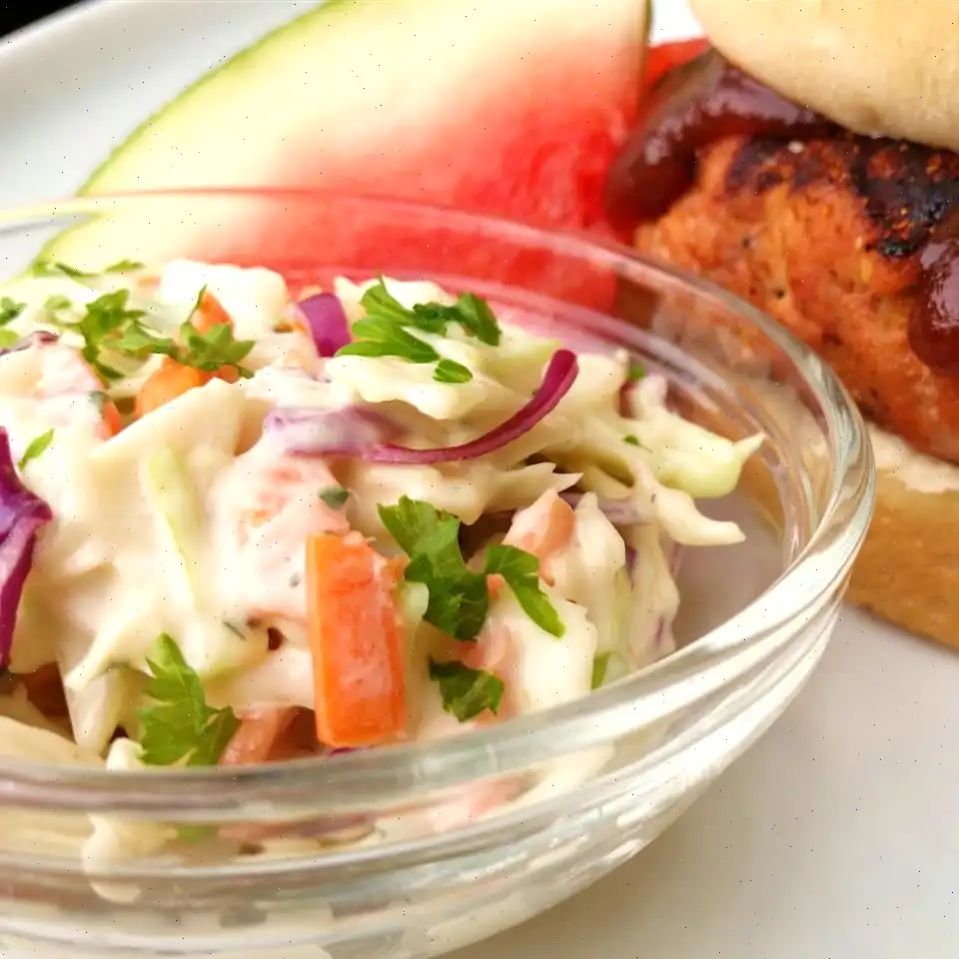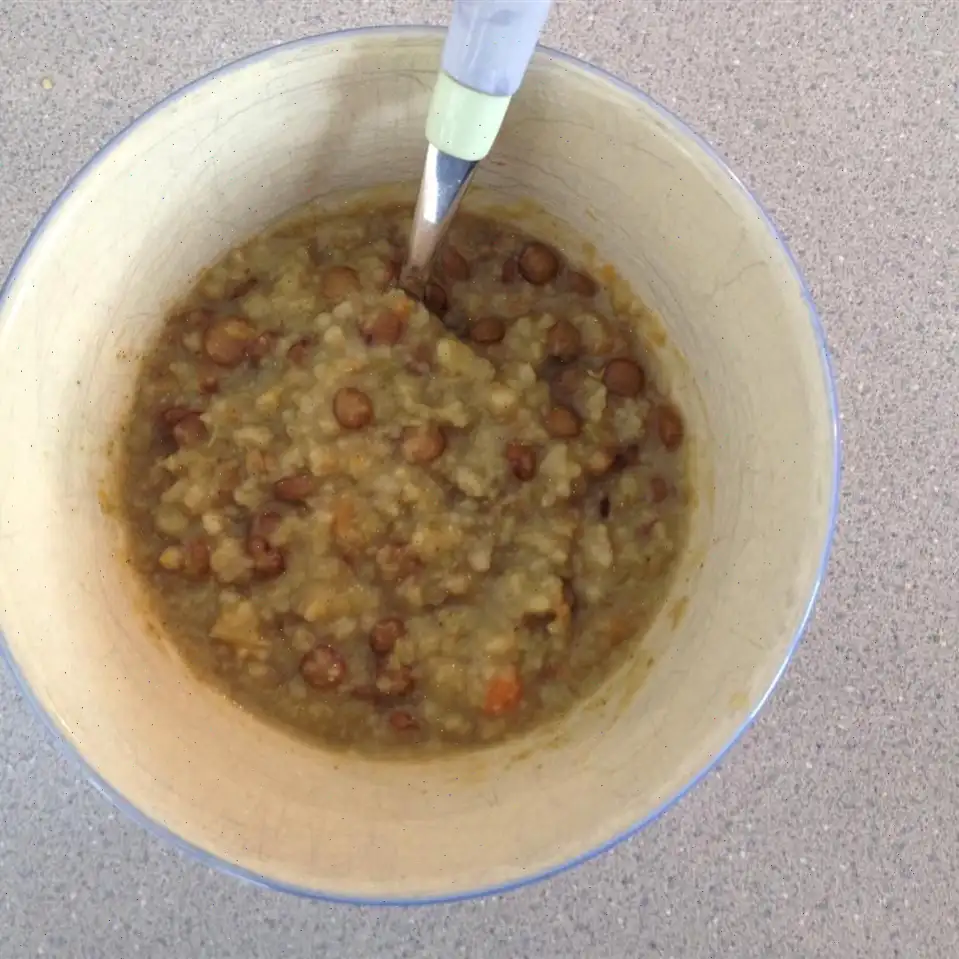
Fleischsalat (German Meat Salad) Recipe
This simple, yet satisfying bologna and pickle salad is a perfect side dish for any gathering. With just a few basic ingredients, you can make a creamy, tangy salad that's sure to please everyone. It's quick to prepare and even better after it sits in the fridge for an hour, allowing the flavors to meld together.
Ingredients
- 2/3 cup mayonnaise
- 1 1/2 teaspoons white sugar
- 1/2 teaspoon kosher salt
- 1/4 teaspoon freshly ground black pepper, plus more for garnish
- 12 ounces bologna, cut into matchsticks
- 1 1/2 cups chopped dill pickles, plus 1 tablespoon pickle juice from the jar
Directions
1. Start by gathering all the ingredients in one place to make the process smoother.
2. In a large bowl, whisk together the mayonnaise, sugar, salt, and pepper until well combined and smooth.
3. Add the bologna, chopped dill pickles, and pickle juice into the bowl. Gently toss the mixture to coat all ingredients evenly.
4. Cover the bowl and refrigerate the salad for about 1 hour, stirring occasionally. This allows the flavors to develop and blend together.
5. Before serving, sprinkle with a bit more freshly ground black pepper for an extra touch of flavor.
Nutrition Facts (Per Serving)
- Calories: 349
- Fat: 32g
- Saturated Fat: 8g
- Cholesterol: 44mg
- Sodium: 1006mg
- Total Carbohydrate: 5g
- Dietary Fiber: 0g
- Total Sugars: 4g
- Protein: 9g
- Vitamin C: 1mg
- Calcium: 65mg
- Iron: 1mg
- Potassium: 214mg
Servings Per Recipe: 6
These nutritional values are based on a 2,000-calorie diet. Your daily values may vary depending on your specific calorie needs. If you're following a medically restricted diet, please consult a healthcare professional before preparing this recipe.
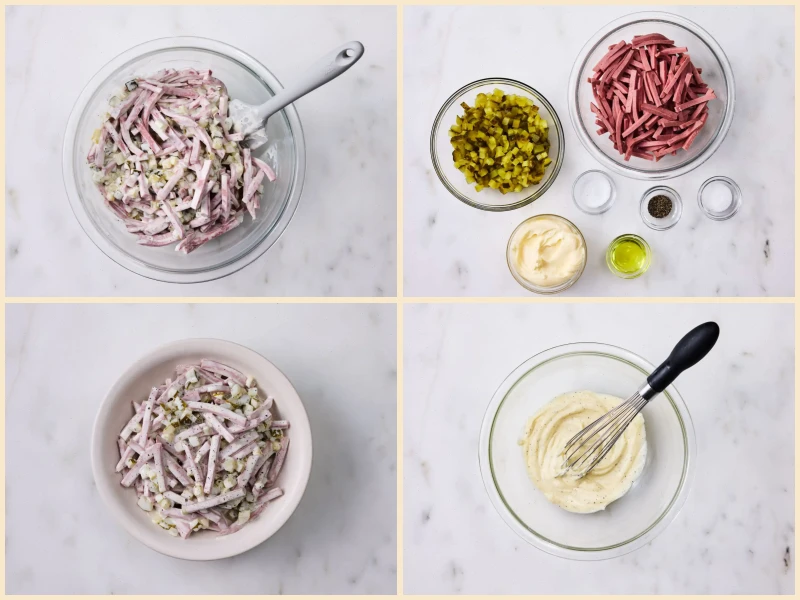
The Origins and Cultural Significance of Fleischsalat
Fleischsalat, literally "meat salad" in German, has roots that stretch back to the early 20th century in southern Germany and parts of Bavaria. It originally emerged as a practical way to use leftover cold cuts, particularly bologna or similar cured meats, combined with pickles and mayonnaise. The dish became popular in households because it was simple, affordable, and could be prepared in advance for lunches or family gatherings.
Regional Variations
While Fleischsalat is enjoyed throughout Germany, certain regions have their own twists. In Swabia and Baden-Wrttemberg, the salad often includes a touch of mustard to give it a subtle tang, whereas in northern Germany, pickles might be replaced or supplemented with pickled vegetables like gherkins or onions. Some southern recipes incorporate finely chopped onions or even a splash of vinegar for extra flavor, reflecting local tastes and ingredients.
Differences from Similar Dishes
Fleischsalat is frequently compared to other European meat salads, such as Russian salad (Olivier salad) or Italian mortadella salad. Unlike these, Fleischsalat has a distinct texture, relying on thinly sliced matchstick bologna and crisp pickles rather than boiled vegetables or a mix of meats. Its defining feature is the creamy yet tangy mayonnaise base, which allows the smoky flavor of the meat to stand out without being overpowered by other ingredients.
Typical Serving Occasions
Traditionally, Fleischsalat is served cold as part of a casual lunch or buffet spread. It is commonly enjoyed on sandwiches with fresh bread, alongside crackers, or as a side dish at family gatherings and picnics. In Germany, it is also a staple at local beer gardens, where it pairs well with pretzels and a crisp lager, reflecting its role as a versatile, crowd-pleasing dish.
Interesting Facts
- Fleischsalat has inspired variations outside Germany, especially in Austria and Switzerland, where local cold cuts replace bologna.
- Despite its simple ingredients, the salad can be customized with herbs, spices, or a hint of mustard to create regional flavor profiles.
- It remains a nostalgic dish for many Germans, often associated with childhood lunches and traditional home cooking.
- The salad's popularity has endured for decades due to its convenience, long shelf life when refrigerated, and ability to transform inexpensive ingredients into a flavorful dish.


